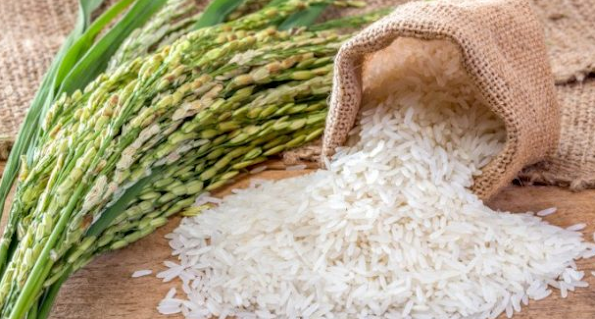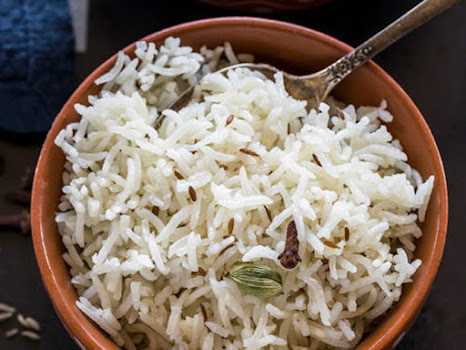About White Rice (And How To Set It Up In Two Different Ways!)
I've been setting up this post for right around a year now. At the point when we dispatched the blog, I posted an exceptionally straightforward instructional exercise on the most proficient method to cook white rice. Be that as it may, since moving to Louisiana (otherwise known as "The Land Where Nobody Eats Potatoes, Only Rice"), I've taken in a ton about how to cook rice, the various sorts of rice, and how to take care of some normal issues like fresh or wet rice.
To start with, we should discuss the various sorts of White Rice In A Bag. You have your old customary rice, which comes in various structures (short, medium, long, and extra-long). Some time ago I didn't generally consider the idea of the grain of my rice, however, I've been doing only long or extra since a long time ago at that point.
All in all, the more limited the rice, the better and stickier it is. That can be something worth being thankful for or something awful. Do you make rice for sushi? Short grain rice (or sushi rice, which is additionally short-grain rice) is the best approach. Do you make something like pilaf or seared rice where you need the individual grains of rice? Long or extra long is the most ideal decision. With regards to white rice, I don't care for mine to be excessively tacky or excessively delicate, so I like longer grains.
They likewise have forte rice, for example, arborio, basmati, and jasmine rice.
Arborio is a short, level grain Italian rice utilized in risotto. What's more, the short grain is essential for what makes risotto so velvety and soothing. Basmati is a fragrant, long-grain Pakistani rice that functions admirably for things like our coconut rice. Jasmine rice is like basmati, yet is filled in Thailand, has a more limited grain, and is less expensive.
There is additionally parboiled rice, which is white rice incompletely cooked or potentially steamed while still in the husk, so it gets a portion of the healthful advantages of earthy colored rice. The lone brand I am aware of is Uncle Ben's parboiled rice, even though I realize it is likewise sold in Asian business sectors under different names. I was idiotic and didn't get the thought, yet it's browner than customary white rice. Like long grain rice, parboiled rice is firm and not tacky by any means. With regards to cooking parboiled rice, jasmine rice, and basmati rice, cook them a similar way you would cook ordinary universally handy white rice.
Anyway. We should discuss how to cook white rice.
I've generally done the typical thing: crease the water as rice, heat it to the point of boiling, cover it, lessen the warmth, and steam it for 20 minutes. This was typically fine in Utah, which is at a high elevation, however, when we moved to Louisiana, my rice was quite often horrendously delicate. Also, I understood that it was most likely the elevation. So I began changing the water contingent upon where I am the point at which I cook the rice, and it has improved a great deal!
Cooking the rice in the oven
With regards to straightforward and exemplary rice, I as a rule cook it in the oven. Up to this point, I generally utilized an ordinary pot to cook the rice, yet of late I have been cooking my rice in a dish rather than a pot.
Various pots for cooking rice
I have discovered that rice cooks all the more equally and better when it isn't stacked as high as it would be in a pot.
To do this in the oven, you can place the rice in the pan...
Rice in the dish
To the cooking fluid, I have discovered that when I am at a typical height, the standard guideline of 2 sections water/1 section rice functions admirably. Notwithstanding, when I am at a low height, I have decreased the fluid by 2 tablespoons and when I am at high elevation, I have expanded the fluid by 2 tablespoons to make the rice more delicate. You can likewise add a teaspoon of white or white wine vinegar for some water (or stock). It additionally assists in improving the last surface of the rice. Make certain to add the vinegar to the estimating cup first, and afterward fill the rest with water to ensure you have relatively little cooking fluid.
At that point add the fluid to the rice (roasted or unroasted) in the container, cover it, and heat it to the point of boiling over medium-high warmth. Diminish the warmth to low (ensure the rice is cooking and sit in the water doing nothing when the warmth is decreased) and cook for 20 minutes. Once more, you may require somewhat less time in the lower layers and a couple of more minutes in the upper layers to ensure the water has been retained. The surface should be smooth and there should be openings or even pockets in the rice. At the point when it is done cooking, eliminate the rice from the warmth, leave the cover on, and steam for an additional 5 minutes before eliminating the top. Take a gander at the rice in this image, you can see the individual grains. It has a decent, firm surface and tastes like conventional rice.
Instructions to cook white rice in 2 stages
From our best chomps
Table rice
Fixings:
1 cup white rice
2 cups water or stock (short 2 tablespoons for low elevation, add 2 tablespoons for high height)
Discretionary: 1 teaspoon white wine vinegar or white wine vinegar
Discretionary: 1/2 teaspoon salt
Discretionary: 1 teaspoon spread or oil
Guidelines :
Spot rice in an enormous pot with a cover. Add water or stock, cover, and heat to the point of boiling over high warmth. Diminish warmth to low (ensure it is stewing and not standing) and cook for 20 minutes or until water is retained. Eliminate from warmth and let stand, covered, for 5 minutes. Lighten with a fork and serve. Yields 3 cups rice.
Discretionary Step: In a huge skillet with a top, heat oil or margarine over medium warmth. At the point when hot, add rice and cook, blending continually, for 30-60 seconds. Add fluid and cook as per past bearings.
Microwave rice
Spot 1 cup rice and 2 cups water in a microwave-safe bowl with cover. Cook on full force for 10-15 minutes (check following 10 minutes) or until water is ingested. Allow rice to stand, covered, for 5 minutes before serving.
Heated white rice
Preheat the broiler to 350 degrees. Spot 1 cup rice, 2 tablespoons margarine, 1 teaspoon genuine salt, and a couple of newly ground dark peppercorns in an ovenproof dish. Add 3 cups of bubbling water and cover. Prepare in the broiler for 45 minutes. Eliminate from the stove and let stand, covered, for 5 minutes.





Comments
Post a Comment